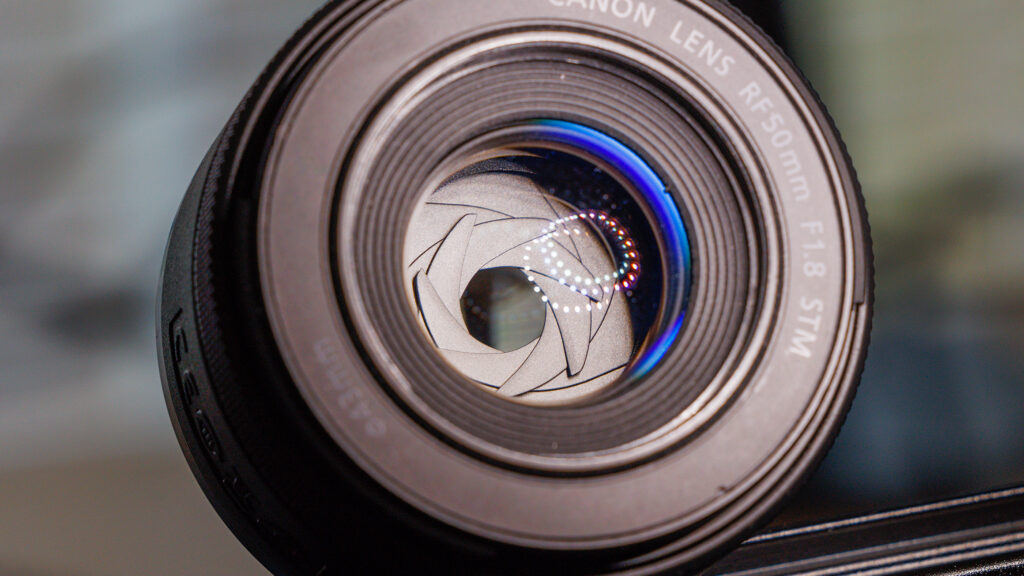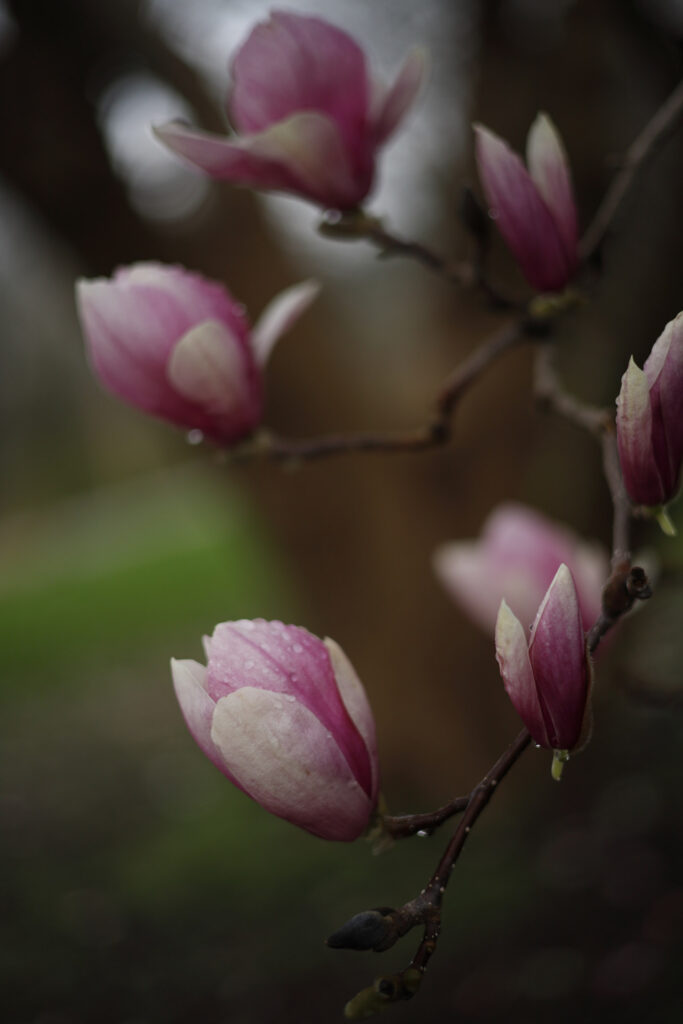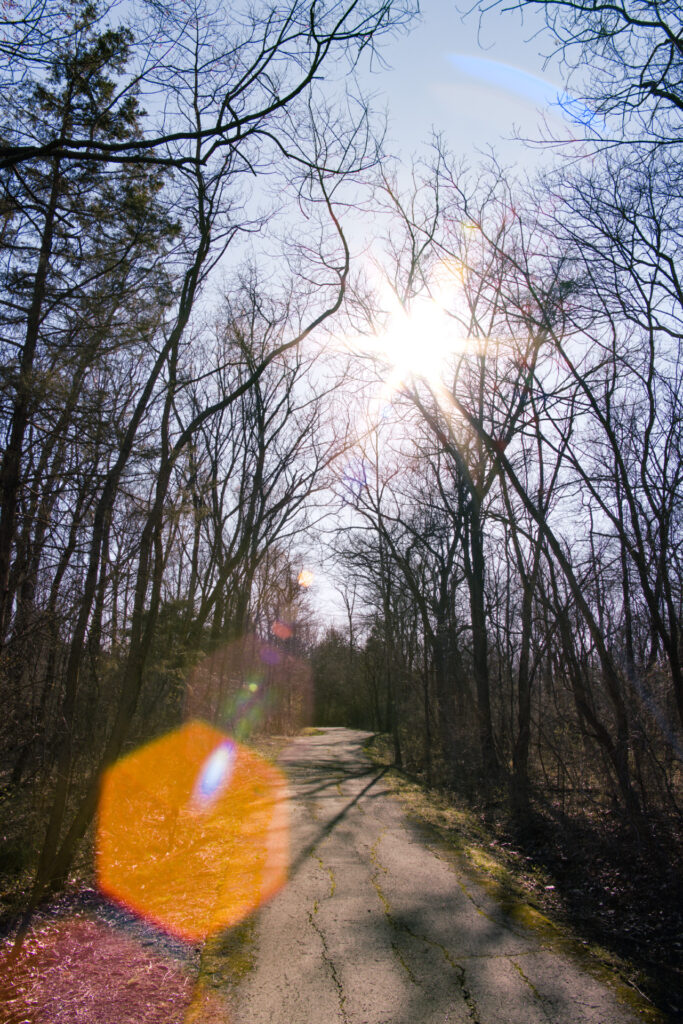Aperture is one of the least effective ways to control the exposure in a scene. While the aperture is considered part of the “exposure triangle” it is actually the one setting that should be left alone. It’s much better to control the exposure using shutter speed, ISO, or some other external method (such as a light).
Typically you’ll want to pick a nice bright aperture and leave it there. This is true for many reasons. I recently read an interview of the cinematographer who filmed “The French Connection”, an old crime movie. He stated that he felt like using lenses stopped down was wrong. I thought this was interesting and I think it makes sense for a lot of reasons.
One primary reason is that if you have a fast lens, chances are it was built to perform well wide open. For instance, my RF 28-70mm f/2 zoom has a very wide aperture. It’s also very sharp wide open and most copies are optimized for wide open performance. When every company is making 24-70mm f/2.8 lenses, there wouldn’t be much of a point in an f/2 lens if it wasn’t great at f/2.
What is also true is that when old manual focus lenses were shot on film, many of the aberrations such as CA, purple fringing, even blooming around bright areas, would be substantially less evident than how those things appear on digital cameras. If you have used old manual lenses on a digital camera and thought, geez, these are loaded with issues, many of those issues didn’t show up on film.
This is partially where the idea that it’s necessary to stop down a lens for best quality comes from.
There are many aspects to a lens that make them better with wider apertures, but it essentially boils down to bringing focus (attention) to the subject.

In case you’re wondering, the image above clearly shows the aperture in a 50mm lens. The aperture in this lens is made of 7 curved aperture blades. The curvature of the blades helps reduce distracting shapes in the bokeh balls.
When to change the aperture
If it’s not a good idea to use aperture to control exposure then why change the aperture at all? Of course there are still creative reasons to stop the lens down, it may be something basic such as creating a sun star in an image, or it may be something more subtle such as controlling the look of your work when different focal lengths are used.
#1 When the distance to subject changes
#2 When doing selective focus
Selective focus is the concept of drawing attention to some thing in a crowd of things through focus.
#3 To control the “look” across multiple focal lengths
#4 To get more detail out of the lens
This is the one everyone knows… stop down and the lens gets sharper! Sharpness is usually not what is improved by stopping down. What happens is that aberrations are removed which increases contrast, and depth of field is increased which expands the focus plane to include more of the scene/subject.
#5 To control some types of aberrations
Certain lenses aberrations can be affected by the aperture. These include different types of flares, bloom, CA, fringing, vignette, overall softness, contrast, sun stars and even bokeh balls.
#6 To generate emotion
There are a variety of emotions that come from the things lenses do naturally.
Examples

In the above image, selective focus draws the eye downward.

As show above, the aperture will directly affect proper lens flares such as these orange hexagons, in addition to the size and shape of “sun stars”.
Conclusion
It’s mostly a consideration for professionals, but using the aperture effectively is a technique that anyone who is serious about photography and videography should think about.
Too much information?? Sign up for one of our 6 week courses at the Learn from Us link above to take one of our instructor led classes. We’ll guide you through everything you need to know and answer any questions you might have along the way.

2 Comments
This is a very helpful tutorial. I’ve been fooling around with film and digital photography on my own for decades, but never understood that from a creative standpoint, aperture needed to be prioritized and that it was the least effective method of controlling exposure. This may be because I started my hobby using film, and so ISO was limited to whatever was in the camera. This digital world makes ISO an easy option for adjusting exposure. Anyway, thanks for this lesson.
Thank you for your comment Joel! What you’re saying about film is very true, which is why many pros would have two cameras with different sensitivity film in each. Amateurs probably didn’t bother with that because of cost. In modern times it’s much easier to work like a pro with a digital camera. As you note controlling ISO is a piece of cake with little detriment across the range that most film ISO’s covered. Another big difference is that most cameras can hit 1/8000 of a second shutter speed and some can go even higher such as the Canon R3 although it’s only with the electronic shutter.